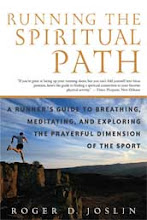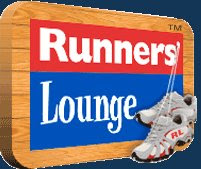
Alright, is it cold enough for ya? Yeah, thought so. I'll have to admit, I've been hibernating for a while now. I guess it's due to the semi-permanent blanket of frigid temperatures our area has been experiencing for far too many consecutive weeks now. And although it may be premature of me to be making this call, my instincts are telling me that we are finally about to experience our first traditionally cold, snowy one. Finally, after the "warmer" winters over the past few years here in central Iowa, a REAL Minnesotan winter!
It's cold outside ... okay more like freezing actually. But we runners must remember that even this type of weather shouldn't stop us from getting out there. Sure I enjoy hibernating inside, all warm and cozy with the wife and kids, but like I've stated many times you need to be prepared when you run in this kind of weather. The month of January has definitely proven to me that I need to take my own advice.
The truth is, cold weather CAN negatively affect your performance and recovery. If your body never truly warms up that means you're running on cold muscles which can increase the amount of muscle trauma. More muscle trauma means more aches and pains and a longer recovery. Although there are a host of reasons you may have struggled on your recent long run, it most certainly could have been related to the colder temperatures.
The good news is there are plenty of strategies for running long in the cold Minnesota winters. And you can do it while reducing aches, pains and prolonged recovery. Here's a few tips Runner's World recently published that I think many of us runners need to be reminded of:
It's cold outside ... okay more like freezing actually. But we runners must remember that even this type of weather shouldn't stop us from getting out there. Sure I enjoy hibernating inside, all warm and cozy with the wife and kids, but like I've stated many times you need to be prepared when you run in this kind of weather. The month of January has definitely proven to me that I need to take my own advice.
The truth is, cold weather CAN negatively affect your performance and recovery. If your body never truly warms up that means you're running on cold muscles which can increase the amount of muscle trauma. More muscle trauma means more aches and pains and a longer recovery. Although there are a host of reasons you may have struggled on your recent long run, it most certainly could have been related to the colder temperatures.
The good news is there are plenty of strategies for running long in the cold Minnesota winters. And you can do it while reducing aches, pains and prolonged recovery. Here's a few tips Runner's World recently published that I think many of us runners need to be reminded of:
- Keep your body warmer by adding an extra layer on your legs. Many runners wear one pair of tights, but when the temperatures drop you can keep your legs warm by adding a wind-proof layer. I've found when running in extremely cold temps that wearing tights (loose or tight) plus a wind-proof shell pant blocks the wind and traps a layer of warm air around your legs.
- Temperature is relative. If you are from a warm-weather climate like Georgia and not use to cold runs, you may need to add extra layers at temperatures at 40 degrees and below. Runners that adapt and are use to colder climates may not add that extra layer until it drops below 30 degrees. Plus, every person is different. It's interesting that I have seen many runners successfully train in shorts all the way down to 30 degrees. Not me, I'd freeze.
- Find a wardrobe that works for you and keep track of it in your log. That way you will know what to wear in any kind of weather. That information will also be useful if you travel to a race that is colder than normal.
- Take a warm to hot shower prior to your long run when the temperature is cold. It will warm your muscles, wake you up and better prepare you for the colder temperatures. Consider it a pre-warm up. You'll feel a difference in your performance and you're running buddies will appreciate you smelling fresh on the trail.
- Warm up thoroughly with at least five minutes of power-walking. That is, walk very briskly to warm your muscles and prepare for the upcoming high impact run.
- For cold, windy days select a course where you run one way with the wind at your back. Your body will be warmer and your pace a little more swift. If this isn't possible, run the first half of the long run against the wind and the second half with the wind at your back. That way you won't risk building up a big sweat and then freeze finishing the second half with the wind in your face.



















